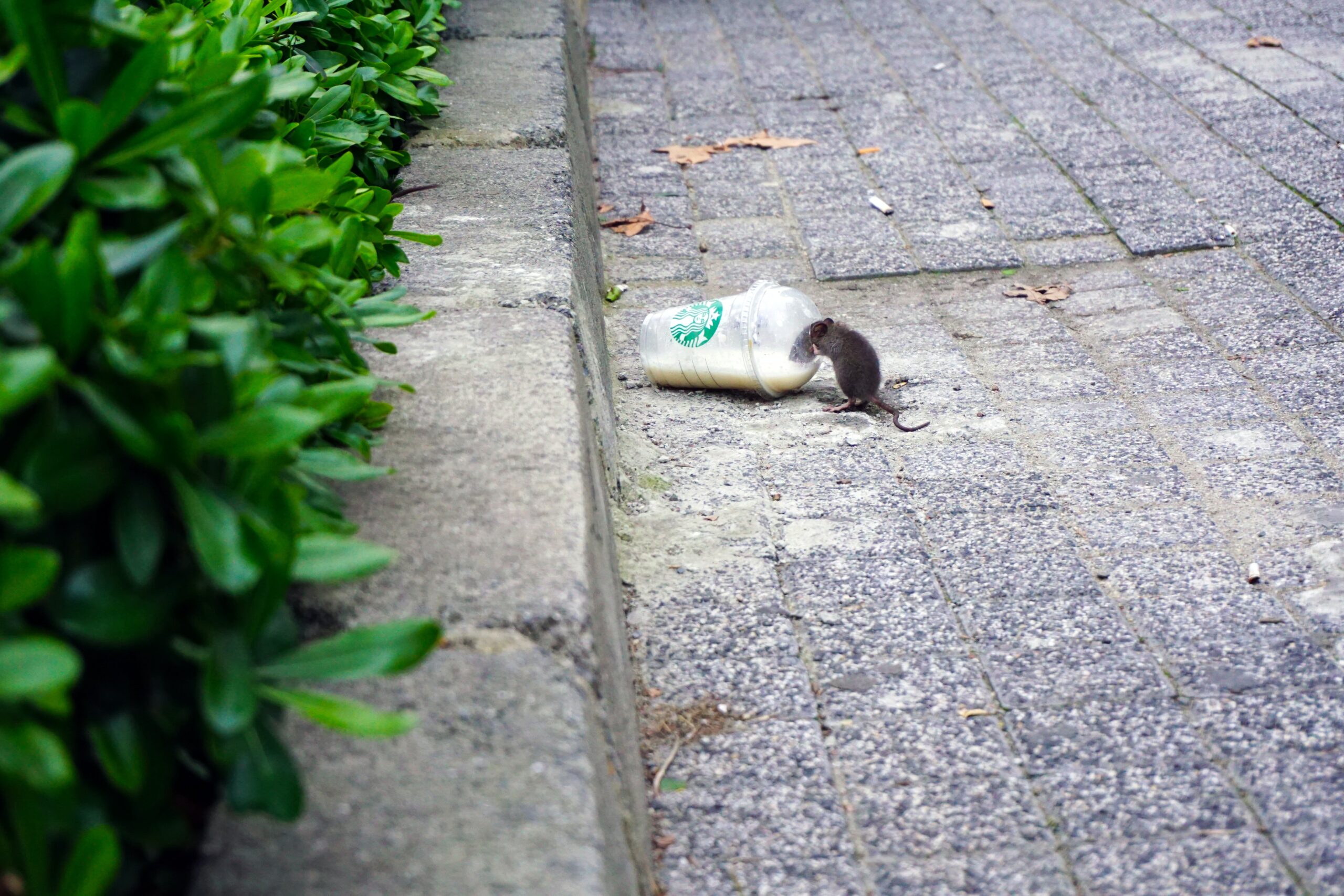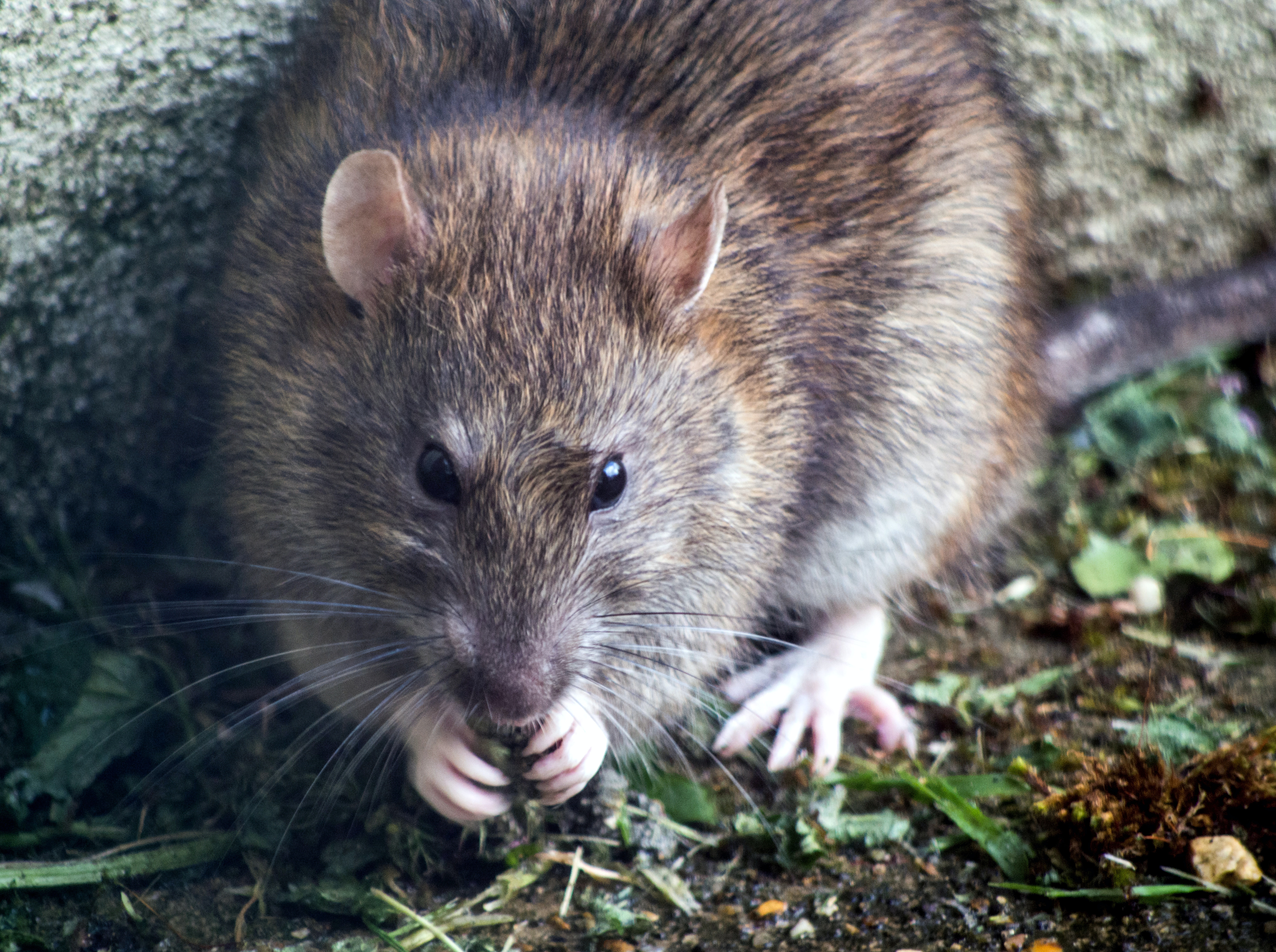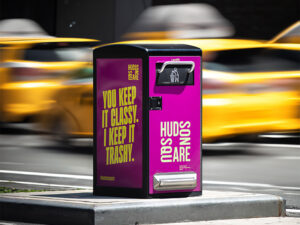 The Problem: Pests & Public Space Waste
The Problem: Pests & Public Space Waste
Dealing with pests is a prevalent and serious challenge faced by public spaces of all types, including municipalities, parks, university campuses, indoor & outdoor retail venues, and transit systems. Public spaces allocate significant time, energy, and financial resources to addressing pest problems: to keep rats out of sight, to keep birds at arm’s length, and to prevent insect infestation. However, among the numerous approaches to mitigating the problem, one of the most impactful, proven methods of controlling unwanted pests is centered on public space waste management.
Open & Uncollected Waste: A Primary Food Source for Pests
Waste bins are a predominant food source for pests, attracting rodents, birds, and insects. Open-top bins allow easy access for pests, enabling the pest population to flourish in surrounding areas. Additionally, when pests have continuous access to waste, public spaces face the issue of pest-strewn litter. Such pest-strewn litter creates an unattractive & unsanitary space that deters visitors and consumes labor hours. Waste that is left uncollected for long periods of time leads to overflows and decomposing waste, further attracting pests.
Effects of Pests & Uncontained Waste
 Deters Residents & Visitors
Deters Residents & Visitors
The visible and assumed presence of pests in public spaces is a major deterrent for residents, visitors, and travelers. Public spaces aim to create a clean, safe, attractive, and welcoming environment for their communities, and high-traffic areas are especially at risk of pest infestation.
Deters Businesses from Local Area
When considering a location, businesses of all sizes, from corporate campuses to SMBs, assess the environment of the surrounding community. Municipalities and Business Improvement Districts strive to create a clean, safe, aesthetically-pleasing environment to attract investment and commerce. Visitors often choose to avoid pest-infested locations, presenting a problem for businesses nearby.
Potential Public Health & Sanitation Risks

Serious, and even fatal, diseases can be spread by pests such as rodents, birds, and insects. Rats are especially concerning to high-traffic public spaces like cities, parks, and transit stations. Implementing proper public waste management effectively reduces public health risks related to pests.
Greater Strain on Waste Collection Teams
The presence of pests increases the workload for waste collection teams due to increased ground litter. Picking up strewn litter by birds and squirrels makes collections significantly less efficient, and presents greater sanitation risks for staff.
Detracts Resources from other Priorities
When the public space workforce is focused on addressing pest-related issues, the increased labor & cost associated with pest mitigation detracts from other tasks & projects. Rather than allocating time, personnel, and funding to public space upkeep & environmental improvement, valuable resources are consumed by keeping pests at bay.
The Public Space Waste Solution for Pests: Containment & Collection
As public waste is a primary attractor for pests, ensuring that pests cannot access their food source is critical to addressing & preventing infestation. To reduce, and even eliminate pests, public spaces must ensure that 1.) waste is contained completely & sealed from access, and 2.) waste is collected efficiently.
Complete Waste Containment: Eliminates Access & Attractants

Complete containment of public waste makes waste inaccessible to undesirable pests. Additionally, keeping waste contained prevents waste odors from leaking and attracting pests to the area. The design of public space waste bins is a critical component to ensuring containment. Replacing traditional wire & plastic bins with fully-enclosed, sealed containers blocks pests from accessing a once-available food source. Sealed waste bins with durable, rust-proof material are ideal for long-lasting pest mitigation. Even if a waste bin is technically ‘covered’, plastic, unlocked tops can be opened easily by rodents.
Timely & Efficient Waste Collections: Eliminates Overflows and Decomposing Waste
 When left uncollected for too long, public space waste risks overflows & decomposing content. Bin overflows are an obvious attractor for pests, and decomposing waste is often a breeding ground for insects. By knowing exactly when to collect, collection teams eliminate overflows and decomposing rubbish. Implementing Smart Waste & Recycling systems in public spaces ensures that waste is collected only when necessary: when a bin is full, or when waste has been left unattended for an extended period of time. Smart Waste units provide real-time data, notifications, and reports to collection teams. Smart Waste is proven to be one of the most efficient methods for pest mitigation, as it helps to create a clean, safe, and attractive space with minimal strain on external resources. Overflows and decomposing waste can be eliminated with relative ease by replacing traditional waste bins with intelligent design.
When left uncollected for too long, public space waste risks overflows & decomposing content. Bin overflows are an obvious attractor for pests, and decomposing waste is often a breeding ground for insects. By knowing exactly when to collect, collection teams eliminate overflows and decomposing rubbish. Implementing Smart Waste & Recycling systems in public spaces ensures that waste is collected only when necessary: when a bin is full, or when waste has been left unattended for an extended period of time. Smart Waste units provide real-time data, notifications, and reports to collection teams. Smart Waste is proven to be one of the most efficient methods for pest mitigation, as it helps to create a clean, safe, and attractive space with minimal strain on external resources. Overflows and decomposing waste can be eliminated with relative ease by replacing traditional waste bins with intelligent design.
Bigbelly Smart Waste & Recycling Products
- High Capacity Smart Waste Compactor ⮕
- Standard Capacity Smart Non-Compactor ⮕
- Multi-Modular Smart Waste Kiosk ⮕
- Telebelly Multipurpose Hosting Platform ⮕
- CLEAN Software Management Platform ⮕
Connect with the Bigbelly Team to Learn More!



